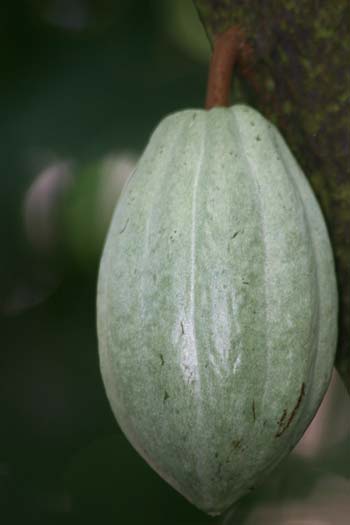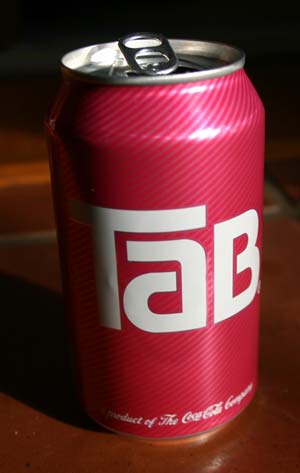Musings

The trek continues; we left the So-Mich green (doesn’t the Botanist’s garden look great!) bound for the northlands.
At the cottage, we found more green, some we whacked down with the Super Mower. We also found that in our absence wee grey mice and a bat had made the building their coffin. Ick.
Posted at 10:22 PM |
Comments Off on Treking on

Along with population growth, think about basic resources, like potable water, and The Future….
Intensification of production generally entails increased costs, of one form or another. In agriculture, say you are a subsistence farmer, and you decide you need to expand your field into an area you previously avoided because of its slope. So you get out the kids and uncles and other hangers-on, and put together a work party and grub up some rocks and do some terraforming and, presto, you have some terraces that make your new field flatter and allow it to retain more moisture.
Here, Henry I. Miller and Gregory Conko (never heard of them, but Miller is at the Hoover Institution at Stanford) discuss several facets of modern agricultural intensification. They make some points I’ll summarize here about two big crops here in North America: maize and potatoes (both new world species, let me add).
Maize (you may call it corn) is susceptible to a mold called Fusarium, which produces a deadly fungal toxin, especially in grains damaged by insect invaders. This is just the situation in the Third World—and organic fields in our own US (and Canada). Thus, organic maize is more likely to be hazardous to your health from eating it than non-organic cornmeal grown from seeds that are genetically resistant through gene-splicing to corn borers (called Bt corn).
Similarly, potatoes are a mega-crop in the US that supplies French fries to every mouth around nearly once a day on average. Potatoes can be gene-spliced with a gene from the same bacterium used for the maize mentioned above (Bacillus thuringiensis) and another gene from elsewhere and they will be more resistant to the Colorado potato beetle and another the potato leaf roll virus, meaning reduced use of insecticides that endanger the health of farm workers.
Cautious consumers have rejected both genetic alterations.
See, more food production is necessary to support a burgeoning population, and sometimes easy, low-impact changes can be instituted at first to kick up production, but then it gets more complicated. Even making a bigger garden can have a downside—fewer trees for firewood, for example, or medicinal plants (“weeds�?) being squeezed out, or fewer pollinating insects. When you get to monocropping, the only way we now have to feed the global population at current levels (and they’re still rising, mind you), you’re facing a wealth of ethical decisions with unending implications.
So, if you buy organic because you think it’s better for the environment, you better rethink that. If you buy organic because you think it’s better for your health, which I used to think was a good argument, you have to rethink that, too. If you buy organic because you think it sends a message to policy-makers, you’d best put at least some of your $$ toward various population control programs, it seems to me. And, hey, good luck. To all of us.
Posted at 4:01 PM |
3 Comments »

Dogs. Cats. More dogs. More cats. Didn’t go by the house with the parakeet in the window. Yet, today’s walk followed the ruta mascota. [In all fairness, the (nascent) cabbage is no mascota.]
Also, squirrels. Mockingbirds. A robin or two. A cardinal. More squirrels. Busy morning here in Virginia-Highland!
By the way, today’s title is a polite homage to tourist materials from the Yucatán, aka the Maya Riviera, where you’re invited to visit the Ruta Maya.
Posted at 8:32 PM |
Comments Off on Ruta mascota

In normal life, “simplicity�? is synonymous with “easy to do,�? but when a chef uses the word it means “take a lifetime to learn.�?
—observes Bill Buford in Heat: An Amateur’s Adventures as Kitchen Slave, Line Cook, Pasta-Maker, and Apprentice to a Dante-Quoting Butcher in Tuscany (2006; Alfred A. Knopf). I’ve gotten through the line cook part so far….
I find it endlessly (well, almost) interesting how specialized vocabulary plays out, even when those in the know are a relatively small group. In archaeological field work, “check out�? is a simple phrase—be forewarned by the above definition, ’cause checking out a landform is a very complex activity, if done superbly, and requires an awareness of myriad situational factors, for example, post-depositional land use effects, distance to the nearest surface water source, where neighboring occupations were, what the soil’s like—I could go on (but Buford’s more interesting).
Buford sandwiches tales of culinary and gastronomic events, both on this side of the Atlantic and overseas, between the subtitled sections. While in Italy prior to the pasta-making, Buford discusses a treatise that’s more than a cookbook by a Vatican librarian who visited a gourmand Cardinal in his summer retreat outside of Rome in 1463. The librarian, Platina, was no chef, and recorded the recipes and observations of his host’s chef, the Maestro. Platina includes bits of received wisdom—here’s one of the best:
…�?the testicles of younger animals are considered better for you than those of old animals,�? except the testicles of roosters, whose testicles are good for you regardless of the age of the bird, especially if served alongside calves’ feet and spices, in the Roman style.
I await the latest in Science or Nature on this! In the meantime, you can get an English translation of Platina’s book from Amazon for about $20!
For now, thanks for “checking out�? my blahg!
Posted at 4:15 PM |
Comments Off on Kitchen tales

For Mom’s birthday last week, I made my first Key Lime Pie, and it came out perfectly. I love them rather tart, and this recipe, with both the juice and zest, nails the flavor. The tiny green zest bits give the filling an interesting green-dotted yellow color that may put off some diners (not at my table!), so cover it up with whipped cream!
———
Key Lime Pie
Use key limes or Mexican limones for best flavor. This is a classic recipe. The multiple teaspoons of zest really make it exceptional, but only for palates desirous of sharp citrus flavors trumping the sweetness.
This is a morning or next-day recipe, so it has time to cool thoroughly in the refrigerator.
It’ll take a while to do the squeezing and zesting, so do it first. Then preheat oven to 350°F.
Crust:
- 1 1/2 cups graham cracker crumbs (less than one pack)
- 2 tablespoons sugar
- 5 tablespoons unsalted butter, melted
Use food processor to turn crackers into crumbs, and mix crumbs with sugar. You can use cinnamon-and-sugar topped grahams for a subtle change in the crust flavor, but decrease the sugar by a teaspoon so the crust doesn’t fuse. Add the melted butter (microwave makes melting easy) and mix to thoroughly incorporated dry ingredients, then press into 9-inch pie plate (glass is best).
Pop into oven and bake for 10 to 12 minutes until slightly browned. Remove, leaving oven on.
Filling:
- 1 13-14 oz. can sweetened condensed milk, can be no-fat
- 4 egg yokes, large
- 1/2 cup key lime juice
- 2-4 teaspoons key lime zest, finely grated
Begin by whisking milk and yokes together (by hand is fine). Then add juice and zest, whisking until the mixture is homogeneous. It will thicken a bit as the juice reacts.
Pour into graham crust (doesn’t have to be cooled), and bake about 15 minutes until filling is set, although center can be slightly jiggly.
Cool at least 4 hours or overnight. You can top it with meringue (using up the egg whites), whipped cream, or eat it plain. Otherwise, use leftover egg whites in scrambled eggs or another dish.
Posted at 4:13 PM |
2 Comments »

I don’t know butterflies, but this looks like a sulfur type (Colias spp.)
The other day Anne (29 April) posted a recipe for her favorite BBQ sauce, and I started salivating. That recipe is very similar to my old favorite sauce, but recently I revamped the sauce, and I’ve posted my new favorite BBQ sauce recipe in the Food Fun section. I love that sauce over country-style ribs, roasted in the oven!
I’ve also posted a short-ribs recipe that is a bit different, as the flavors are dominated by the complexity of Chinese five-spice powder. This makes a great company-sized feed, and is super with an ice-cold beer!
I admit that we have left-over tamales from Cinco de My-oh yesterday, so I won’t be making any BBQ today, but it’s on the to-do list for tomorrow!
Posted at 10:54 AM |
Comments Off on BBQ love


The Majestic is on Ponce, in Atlanta.
Finally, Westerners are recognizing a fifth taste: umami. That’s the Japanese name for it, but it’s in the vocabulary across Asia. And, as I understand it, the Chinese consider what we’d call pungent another taste, although the fifth taste in ancient China was spicy-hot. For a long time, we Westerners only referenced sweet and sour, bitter, and salty.
Umami is tough to define in English, but you encounter it in meat stocks, red wine, and ketchup. The Wikipedia says umami is highest in foods with “free glutamates,” which include many fermented foods as well as walnuts, broccoli, and tomatoes.
I wonder if experts consider tamale masa as having much umami? Seems to me it might….
Posted at 11:41 AM |
Comments Off on Umami

Cacao (Theobroma cacao) was both “money” and food.
Despite yesterday’s reading list, today I was seduced by the tamale.
Precolumbian people respected maize and treated it with elaborate etiquette. Women carefully blew on kernels before placing them in the cooking pot to give them courage for confronting the fire. Once every eight years they “rested” the corn, cooking it plainly, “for we brought much torment to it—we ate it, we put chili on it, we salted it…we added lime. And we tired it to death, so we revived it.”
That’s from Jeffrey M. Pilcher in Que Vivan los Tamales! Food and the Making of Mexican Identity (1998, pg. 17).
Much of the book is about how the national ruling elite of Mexico has historically followed a European lead and sought to distance themselves and the dominant political discourse from the peasantry (not a rare thing in 19th and 20th century nationalism). Pilcher focuses on how this was done by attempts to replace maize by wheat in the national diet (very unsuccessful with most of the population, the subsistence farmers). He really doesn’t amplify how this was also accomplished in language (Spanish over indigenous languages), dress (replacement of traditional or Colonial garments), and in the market economy (widespread changes too complicated to detail here). As a historian, I thought he might….
Now, however, these most Mexican of prehispanic traditions are touted in tourism advertising, and considered the biggest selling point both to foreigners and to Mexicans.
Me, I’m craving a trip out Buford Highway to find some genuine tamales handmade by a tamale lady, which are superb reheated in the microwave.
Posted at 10:22 PM |
Comments Off on Tamale time

The They we call They with a capital T have decided to market Tab in a new way (ha, no, not really new; they’re just doing that Coke Classic marketing game). Long-time Tab aficionados like my husband are displeased that their drink is being altered to serve the gods of the bottom line.
Recently, John found a retro t-shirt with the Tab logo on the front, and being a logo guy, bought it. The first time I went anywhere with him when he was wearing it, in about an hour in two shops, three different people came up to him to rave about Tab and complain about the corporate effects on the drink.
Let’s see if Coke’s marketing people figure out that they have some loyal customers who are mighty unhappy. I guess, however, this will only happen if the customers they’re trying to attract don’t start buying the new travesty version of Tab.
Posted at 2:51 PM |
Comments Off on Tab today

Maize: very indehiscent.
STEM = science, technology, engineering, and mathematics
Wanna be a high school science teacher? Have the chops for it? Then you are in increasing demand—a demand greater than for college professors. Click here for discussion by Jo Anne Vasquez of the National Science Board.
Did I have a high school science teacher who strongly influenced me, which Vazquez says is common? Maybe Bill Campbell, the smoking non-smoking advocating biology teacher….
Trivia about Mason High: Malcolm X went there. The son of one of Malcolm’s buddies, who he mentioned in his autobiography, was in my class, but even so, we didn’t talk much about Malcolm. Sports was the strong suit at Mason, not history….
Today’s vocabulary: indehiscent. Means resistent to shattering, and is applied to changes in grains, e.g., wheat, in the process of domestication. Seed heads that retain the grain make it easier to harvest efficiently, yet the plant is less successful at reproducing itself because unharvested seeds would not disperse far from the parent.
Connection between STEM and “indehiscent”? Your call!
Posted at 4:16 PM |
Comments Off on STEM










